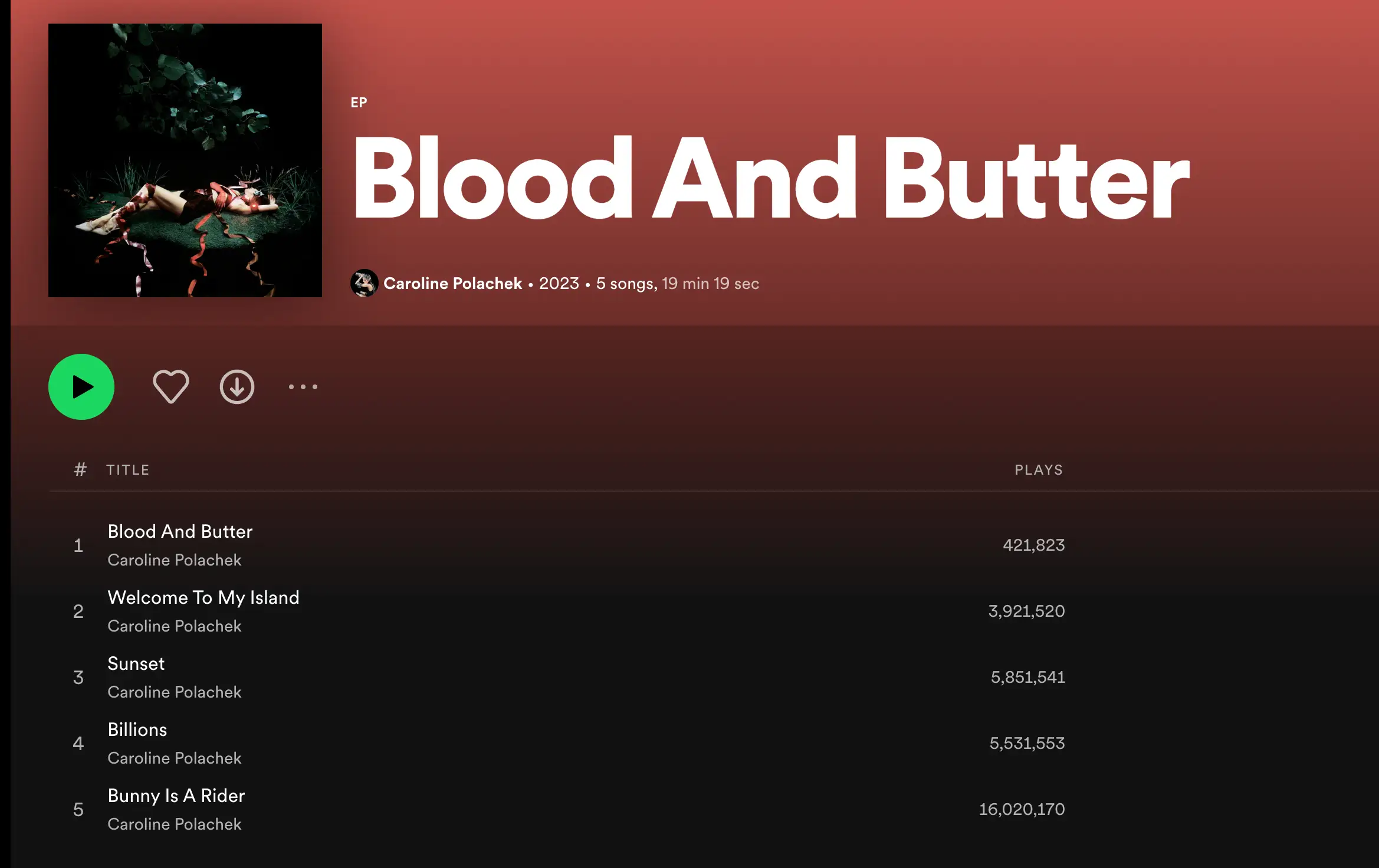There are few things more special than the art of the album. However, the process of packaging a complete project can be confusing - What should the first song be? How many songs should go on an album? How do I make my entire album cohesive?
Not to worry! We'll answer all of these questions and more below so that you can build a strong album sequence that resonates with your listeners. Let's dive in!
What Is Album Sequencing?
An album's sequencing might not feel as pertinent in the modern age of streaming, but for true music lovers, it makes all of the difference. In its purest form, album sequencing is deliberately selecting the order of songs in your project for artistic utility.
As showcased below, there are multiple ways to sequence an album, and building a perfectly sequenced project is an art in its own right.
How Do I Sequence An Album?
Like most basic functions of music, an album's sequencing is subjective. There is no right or wrong way when it comes to grouping tracks. However, the best albums are usually sequenced with some artistic intention. You'll need to take technical considerations, track type, and creative organization into account when building the perfect sequence.
Technical Considerations When Sequencing An Album
Don't forget that sequencing an album comes with its own technical specifications. You'll need to take the following into account when building a complete project:
Album Length
When does a project technically become an album? Generally speaking, any project over seven tracks is considered an album. Length should be considered when creating a piece of work - more established artists may be able to present larger bodies of work without the art feeling over-saturated, but emerging creators might be best off keeping things short and to the point.
Mastering Output Levels
Note that albums may need to be mastered in several ways depending on the audio output. In most cases, you are optimizing an album for streaming platforms which comes with its own technical implications.
Contractual Obligations
If you're under a recording contract, you need to work with your management to determine whether your current project is best sequenced as an EP, album or mixtape.
Different Types of Tracks To Consider
Figuring out your song order starts with identifying the types of songs you have. Here are the different types of tracks you might consider including on your project:
The Hits
The hits are songs that are usually more upbeat, faster, and tend to resonate with a larger audience of people. Hits are frequently used to open albums and serve as singles regularly within an album setting.
Interludes and Skits
Artists may include interludes or skits that serve as transitions from one song to the next. These songs are often in the same key as the prior or proceeding songs to create a continuous listening experience.
The Title Track
The best song on your project might act as the title track, or namesake for your full project. However, note that your album title doesn't necessarily have to be one of the names of your songs.
Thought Pieces
Some songs aren't built for every listener. Thought pieces might be a slow or soft song that exists for more character development across a piece, or speaks to the vulnerabilities of an artist. These are deeper cuts that may resonate best with an artist's true fans.
Openers and Closers
The opening and final track are immensely important in an album's sequence. These are often some of the best songs on the album and help open and close the world you're working to create with your art.
How To Sequence An Album: 5 Approaches
The process of sequencing an album will vary based on your goals as an artist. Here are a couple of approaches you might want to consider:
Waterfall Release
In the streaming age, singles are king. Even if you're putting out an album, highlighting your singles should be a central part of your album flow. The goal of a waterfall release is to highlight each single while tying back to the songs that have already been released. This is why you'll frequently see artists with three, four, or even five singles before putting out a project nowadays:

In the above example, Caroline Polachek has created an "EP" of prior singles. This isn't necessarily a project on its own, it's more of a byproduct of a waterfall release. The second single release would include a sequence of the second single, as well as the first single. The third single release would include the second single along with the first single. This approach may seem redundant, but it works wonders for reminding your listeners of your other releases.
Chronological Organization
If your album has a chronological theme, or is story telling directly from your personal life, it might make sense for the tracks run from beginning to end. Let's take the example of the recent popular work of JVKE:
The album starts with the singer narrating through the start of a relationship, with the end of the album settling on the end of a relationship. With the chronological setting, JVKE creates a setting that seamlessly captures the listener's focus.
Thematic Organization
Does your album encapsulate a whole story? Your whole album should play out like a narrative piece of art-- with a beginning, build-up, climax, and epilogue. A great example of this is FKA Twigs' "MAGDALENE". This body of work centers around the historic figure of Mary Magdalene as a vehicle for heartbreak:
Attention Optimization
Do you want to keep the listener engaged? You might want to prioritize an album sequence that's built around the flow of attention and energy. Any slow songs should be followed by more upbeat music to keep engage the listener's focus.
Experimental
Building a great album doesn't have to fall into a neat category or organization. Ultimately, you decide which two songs work well in context with each other-- if it works, it works! Experiment and create an album sequence that speaks to you. After all, it's your art!
Album Sequencing FAQ
Still having trouble figuring out the order of your album songs? Take a look at these commonly asked questions and answers to expand your understanding:
Why is album sequencing important?
The best albums are intentional throughout every step of the process, especially when considering how multiple songs tie together. Album sequence can change the whole perspective of a project, shifting the perspective from one song to another.
What is a 7-track album called?
A 7-track album is sometimes called a mini-LP. Typically, projects over seven tracks are considered albums, not LPs.
How do I organize my album?
Determining your song sequence will be an individualized process for every artist. In this guide, we'll walk you through several methods to strategically organize your collection of songs.
What is the first track of an album called?
The first track of an album is often called a lead-off, intro, or opening track. The first song can help set the tone for the rest of the project, so it's key to think long and hard about your introduction.
Sequencing an album is a key part of the process. From the opening song to the last song, make sure that your decisions are intentional. When in doubt, take a listen to your favourite albums for inspiration. Have fun building a dream sequence for your art.





